Even among other popular Italian cities, Florence is in a class of its own. The city is beautiful, historic, and positively overflowing with Renaissance architecture and culture. Working out the best things to do in Florence is more a matter of where to start than what to see.
With this Florence itinerary, you’ll visit many of the city’s most beloved attractions. Of course, even with three days in Florence, you can only hope to see a fraction of this wonderful city and its countless palaces and art galleries. That’s just another reason why Florence has forever been a must-see stop on trips through Italy and Europe.
Best Time to Visit Florence
Only the brave or unknowing visit Florence at the height of summer. It is, after all, an incredibly famous and popular destination. While it gets tourists year-round, even during the brisk days of winter, shoulder season (late spring and early fall) is certainly the best time to visit Florence.
April, May, and October offer some balance between crowds and weather that should help with sightseeing. You’ll still share the city with other tourists, but it won’t be as hectic as in the summer. Similarly, the city’s weather is neither chilly nor stiflingly hot in these months, just pleasant with a higher chance of rain. That’s a good trade-off, since you can take shelter in countless museums and galleries.
How to Get Around Florence
Much of your time visiting Florence will focus on the plethora of attractions in the historic city center. This part of Florence is made for walking. You can take minibuses through the Old Town, but you’d miss out on soaking up the atmosphere of these centuries-old streets.
Beyond the city center, though, taking public transport is a smart move. If you can’t stay in the historic center or need to reach the Santa Maria Novella or Campo di Marte train stations, the buses are your best bet. You can buy bus tickets at tobacco shops and newsstands, choosing either a single-trip (which costs €1.5, or about $1.62) or multi-trip ticket (€4.50). A last resort is to buy one from the driver, which will cost you more at €2.50.
The historic center of Florence is a designated Limited Traffic Zone (ZTL), which means you need a permit to drive there.
For flying into Florence, you have two choices of airports: Pisa International Airport and the smaller Florence Airport. To get to Florence from Pisa Airport, take the Pisamover shuttle train to Pisa Centrale, where you can transfer to a regular train to Florence Santa Maria Novella. As for getting from Florence Airport, the Volainbus shuttle runs to the Florence bus station every 30 minutes during the day and hourly in the evening.
Recommendation: See Florence on a comfortable and convenient hop-on hop-off bus tour. With your 24-, 48-, or 72-hour ticket, you’ll get to ride on open-top double-decker buses that cover two routes to showcase the city’s biggest highlights.
Where to Stay in Florence
As a city that’s been attracting tourists for ages, Florence offers a lot of accommodation options, but that doesn’t mean all of them are great. With so many options, working out the best places to stay in Florence can be tough – but not as bad as leaving it until too late and being stuck somewhere you’d rather not stay.
Of course, location is a big factor in where to stay in Florence. The closer you get to the historic center of the city, the more expensive accommodation will be. If you stay too far out, though, you’ll spend time and money on buses traveling to and from the city’s attractions. Just south of the Arno River is a good middle ground, as the lodgings here are often a decent balance of close and cheap.
If you want to stay somewhere truly special, you can’t beat the Hotel Bernini Palace. This hotel is actually a converted 15th-century palace, boasting full Renaissance decor in its rooms, luxurious amenities, and attentive staff.
For a balance of comfort and affordability, Hotel Il Poeta Dante is a great midrange option. With its homey charm, generous breakfast buffet, and cozy courtyard, you won’t want to leave, even though you’re right in the center of Florence.
Obviously, Florence isn’t the cheapest city to visit, but there are still some budget options, such as the Hostel Archi Rossi. This hostel is surprisingly close to the Old Town and has everything you’d expect, including air conditioning and a good complimentary breakfast. For more ways to save money while visiting the city, check out our backpacking guide to Florence.
For more accommodation options in Florence, check out Booking.com. This site consistently offers the best rates, and its customer service is on point. Airbnb is another great place to look. For recommendations, check out our list of the best Airbnbs in Florence.
The Perfect 3-Day Florence Itinerary
Seeing the best of Florence in just a few days can be quite a challenge. A city with this much culture and history ultimately takes longer to experience fully. By following this Florence travel itinerary, though, you’ll get to see the city’s most famous and intriguing sights.
Starting at the heart of Florence’s historic center, you’ll bounce from grand plazas to grander palaces, from immense churches to massive museums. Crossing the river, you’ll be treated to classic views that offer a new perspective on what you’ve seen so far. You can then explore the region of Tuscany further with a day trip to one of its other beloved destinations.
However, before we get to our Florence itinerary, we just wanted to remind you to purchase travel insurance. You never know what will happen and, trust us, you do not want to get stuck with thousands of dollars in medical bills. As a wise man once said, “If you can’t afford travel insurance, you can’t afford to travel.” So don’t leave home without it.
SafetyWing offers travel insurance for only about $10 a week, making it a no-brainer to get. You can get a quick, non-binding quote below:
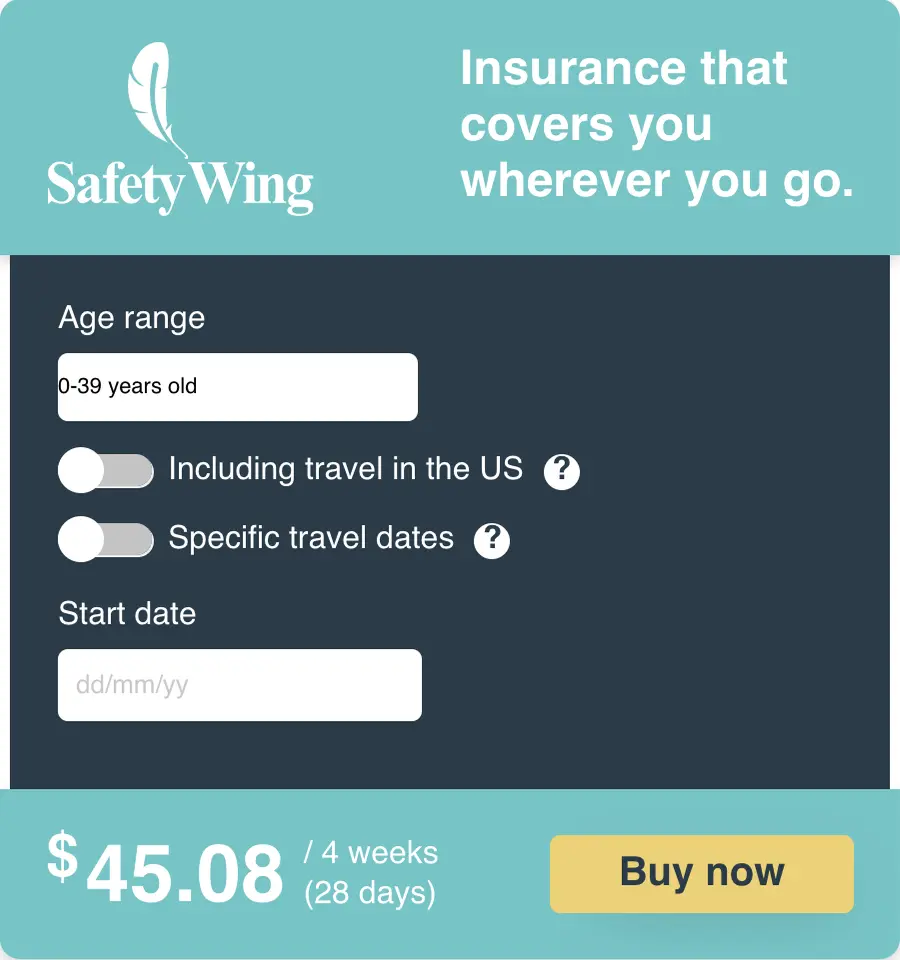
SafetyWing is, of course, not the only option available. Two other popular alternatives are World Nomads and Heymondo.
Now that you’re ready to go, let’s dive into what to do in Florence in three days for the best visit possible.
Florence Itinerary: Day 1
Starting in the center of the city, we’ll make our way to some of the best places to visit in Florence, including two world-famous museums.
Piazza del Duomo
Get an early start and make a beeline for one of Florence’s most treasured plazas, Piazza del Duomo (Cathedral Square), where you’ll find several of the city’s best attractions.
As its name suggests, the square centers on Florence Cathedral. Two other intriguing landmarks here are the beautiful Florence Baptistery and Giotto’s Campanile, the church’s free-standing bell tower, which both share the cathedral’s famous marble design.
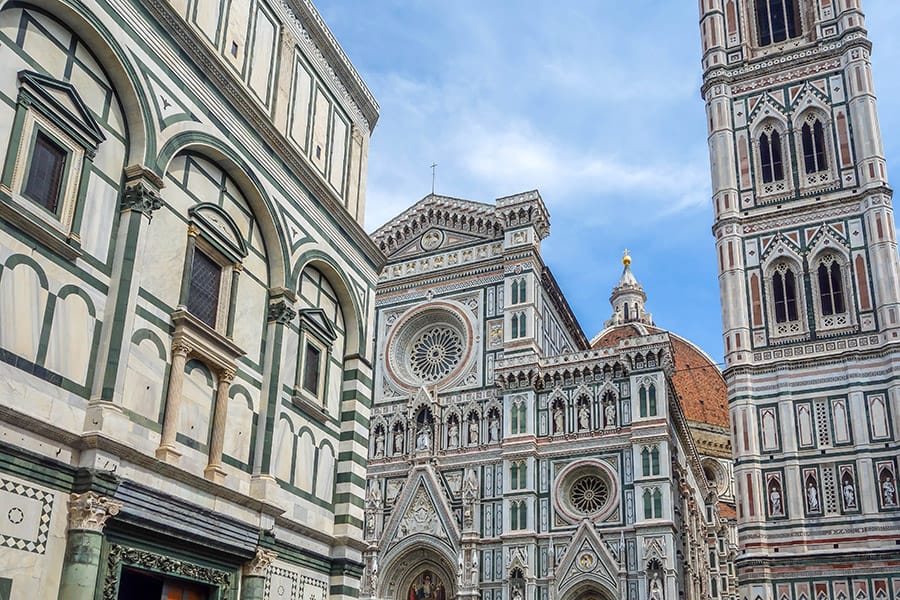
Campanile and Baptistery
Before you wait in line for the cathedral, which opens at 10 a.m., consider climbing the campanile, which opens at 8:15 a.m. With 414 steps and no elevator to the top, you’ll be starting your day with a workout, but your efforts will be rewarded when you see the awesome views out over Florence from the bell tower.
Next, head over to the Florence Baptistery. Venturing inside, you’ll marvel at the incredible mosaics of religious scenes on the ceiling.
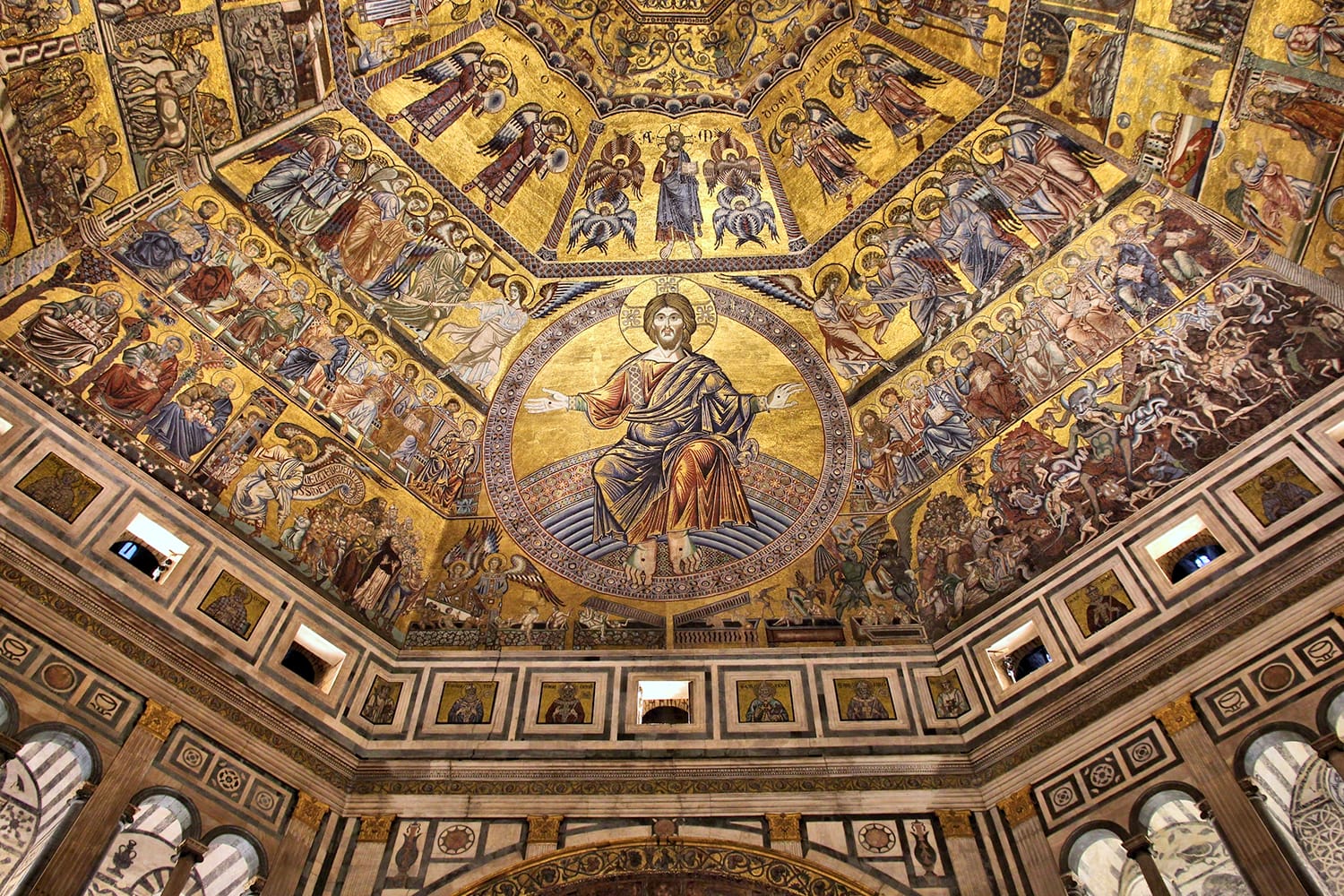
Florence Cathedral
Now that you’ve seen its companion buildings, it’s time to line up for the cathedral, which is free to enter. Even from the line (which moves quickly), you can see that this immense 13th-century church is truly a work of art, from the sculptures lining each side to the huge Renaissance dome on top.
The first thing you’ll notice inside is just how much space there is. Echoes bounce around the cavernous interior, filling this empty space in an unexpected way. Although the walls are bare, be sure to admire the intricate patterns in the marble floor.
If you decided against taking the stairs up the campanile, the good news is that you haven’t missed out on a rooftop view. The bad news is that the climb up to the lookout point in the cathedral’s dome has 463 steps, even more than the campanile – but again, we think the city views are worth it!
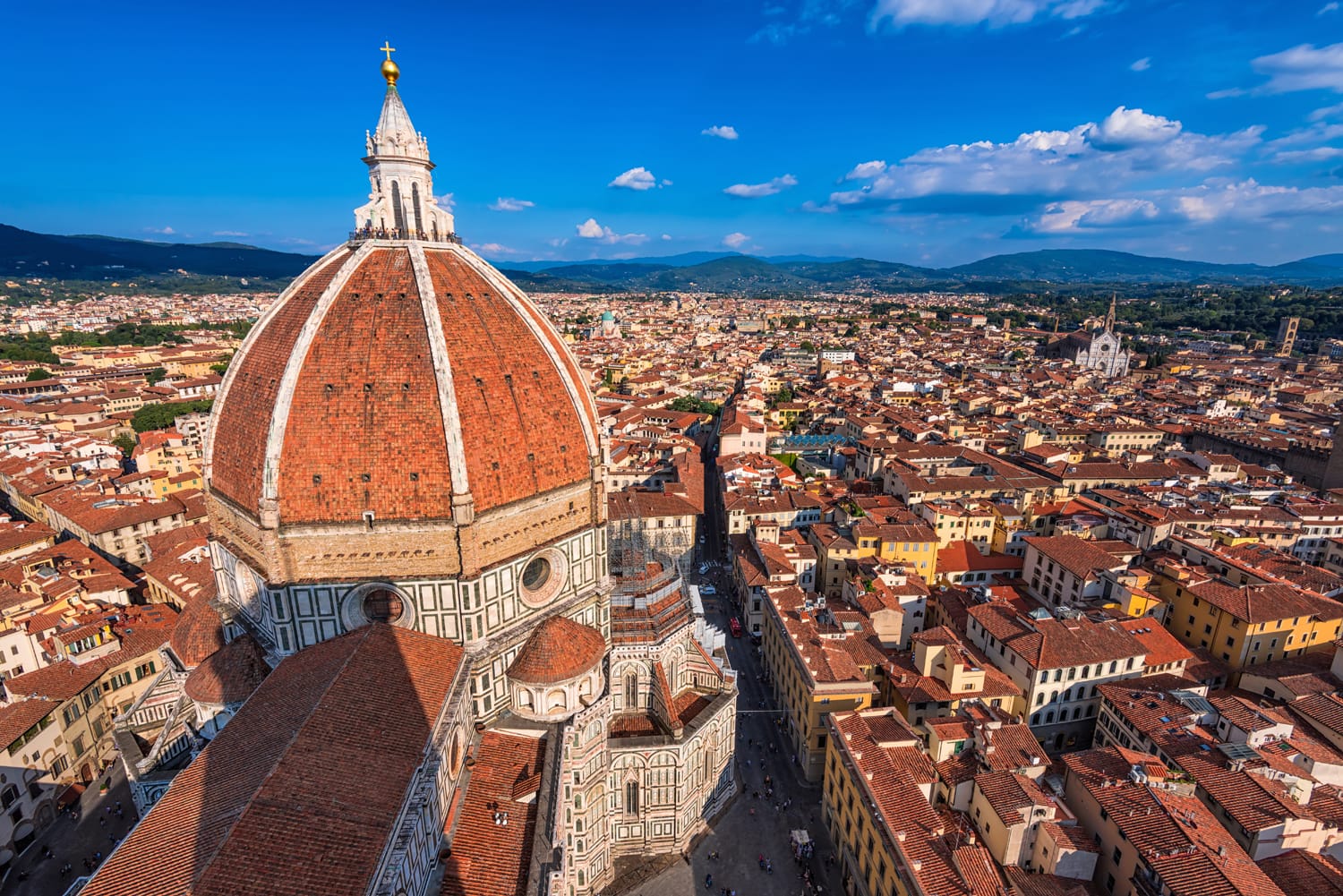
Palazzo Strozzi
Moving away from Piazza del Duomo, wander the streets of historic Florence until you reach Palazzo Strozzi. Besides its impressive architecture, the palace features interesting contemporary art exhibitions inside. Even if you don’t go inside the palace, take a look inside the courtyard, which exemplifies the beautiful design of the many Renaissance palaces hidden within the historic city center.
Piazza Della Repubblica
Heading along Via degli Strozzi, you’ll soon pass under a magnificent arch intoPiazza della Repubblica. Another impressive square in the heart of Florence, this pedestrian area is lined with cafes where you can get your caffeine fix. It’s also home to a vintage merry-go-round that’s sure to delight kids (and maybe your own inner child).
Galleria dell’Accademia
You simply have to visit an art gallery while you’re in Florence, a Renaissance city that was home to so many inspirational artists. There’s no better place to start than the Galleria dell’Accademia, which is home to scores of paintings, sculptures, and other masterpieces by famous Italian artists.
The gallery’s most famous works are by renowned sculptor Michelangelo. This is where you’ll find his original statue of David, one of the most celebrated Renaissance artworks, along with his statues of St. Matthew and the four Prisoners or Slaves.
Like many attractions in Florence, the gallery is incredibly popular. It really helps if you book your skip-the-line tickets online well in advance.
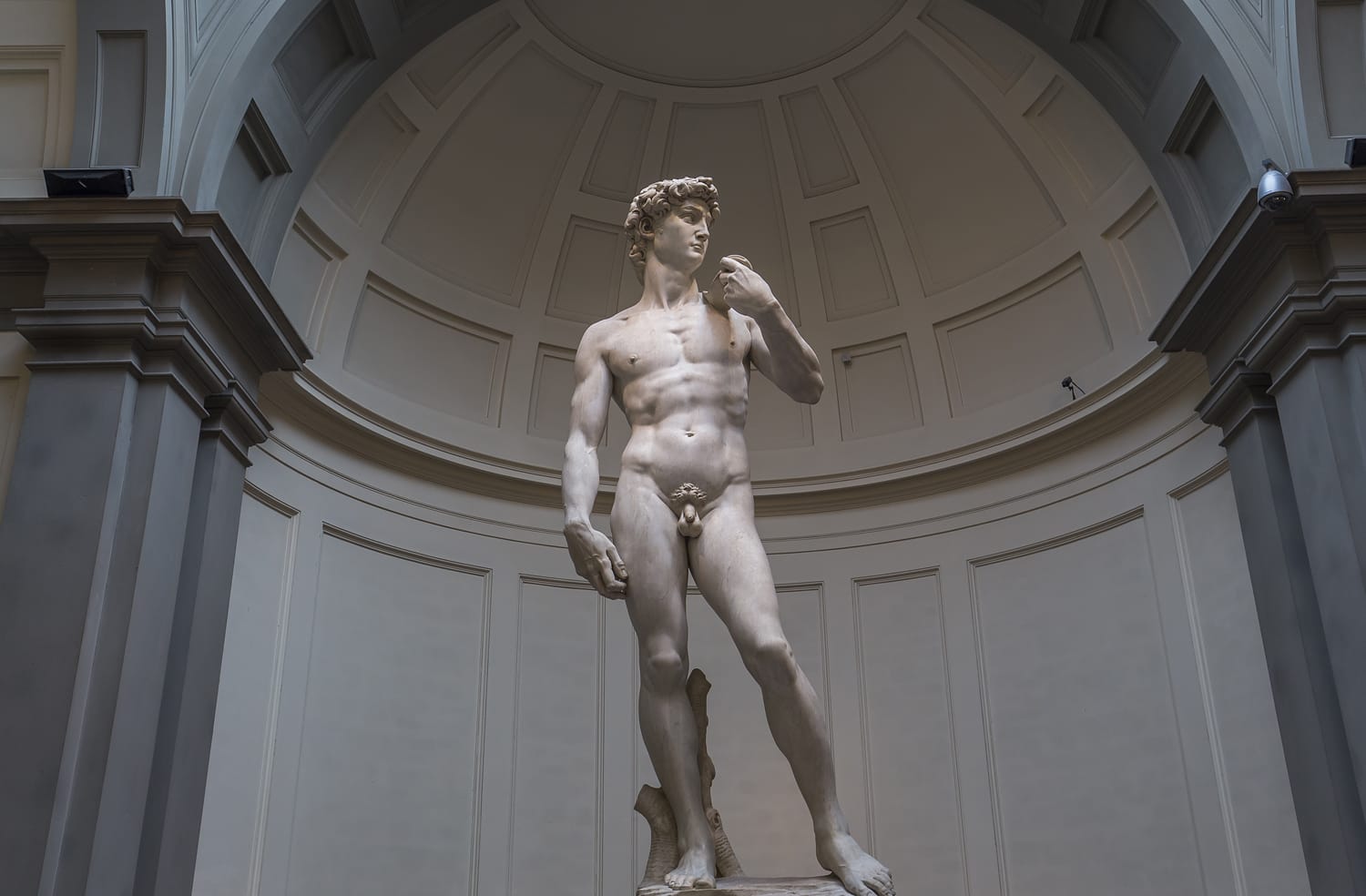
Piazza Della Signoria
Delving deeper into the historic city center will bring you to our last iconic square of the day, Piazza della Signoria. This oddly shaped plaza is a treasure trove of interesting sights, including many sculptures.
At the center of the square, you’ll find the Fountain of Neptune and the Equestrian Monument of Cosimo I vying for the spotlight. Further around the square are more expressive statues, including a replica of Michelangelo’s David. But for the best public statues, turn to the Loggia dei Lanzi and the incredibly lifelike figures under its covered terrace. The mythical Perseus holding Medusa’s head is a vivid standout here.
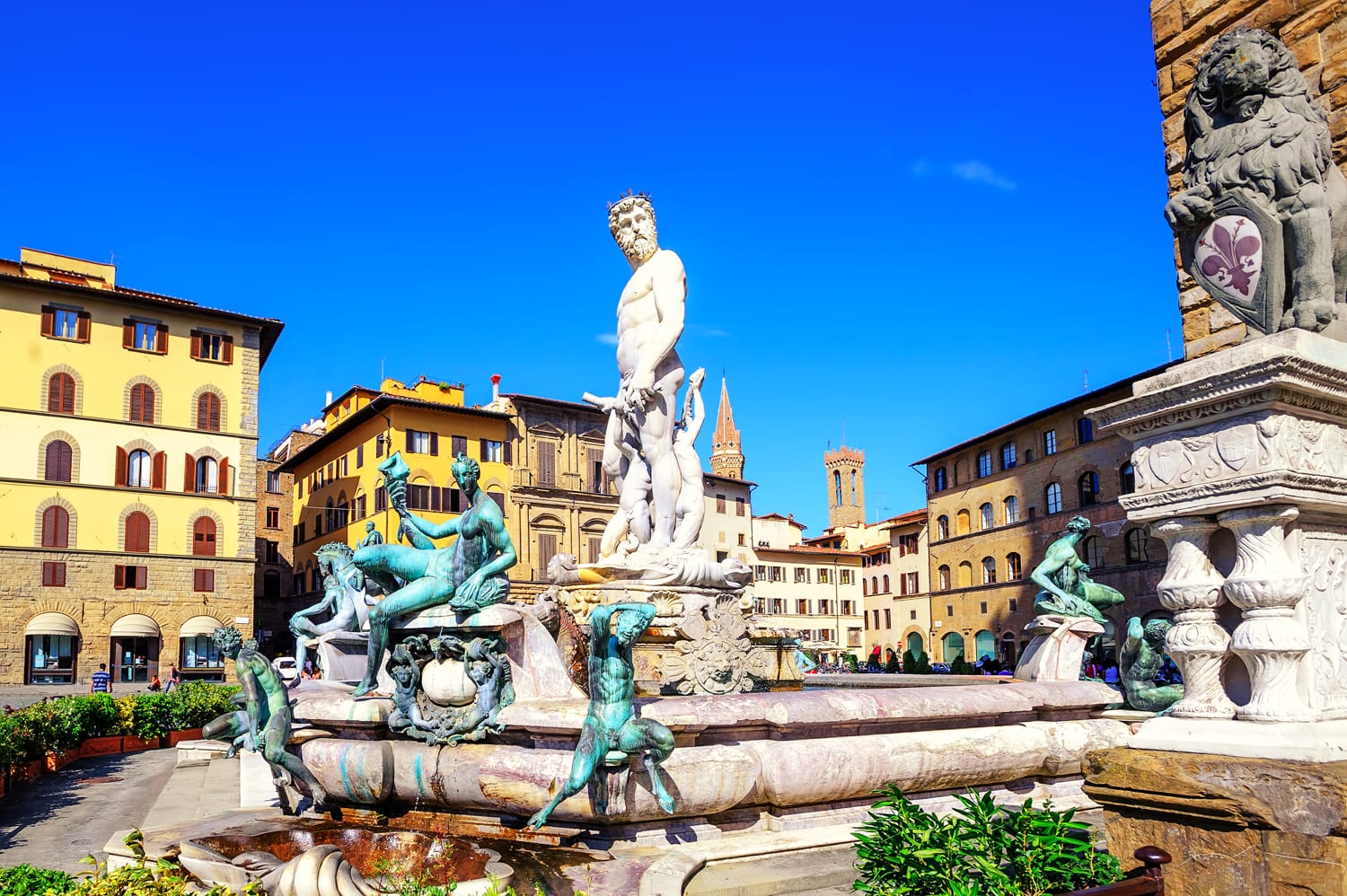
Palazzo Vecchio
The last big attraction we turn to in Piazza della Signoria, Palazzo Vecchio, is hard to miss. With its fortified exterior and high bell tower, Florence’s medieval city hall makes quite an impression.
A visit inside takes you through multiple floors of the fortified palace, even up to the clock tower if you’d like. Again, you’ll have to tackle plenty of stairs if you want a fantastic view of the city.
But the real highlight of Palazzo Vecchio is the Salone dei Cinquecento (Hall of the 500). This huge hall features two long frescoes of battles along either wall. Head up to the mezzanine to get closer to the gold-paneled ceiling full of artwork.
Skip the long lines and spend more time exploring by buying your skip-the-line tickets to Palazzo Vecchio here.
Arno Riverfront
Finish the day with a gentle stroll along the banks of the Arno, the river that flows through Florence. This river is just as important to the city as any of the sights you’ve seen throughout the day. It’s particularly memorable if you walk out onto a bridge and admire the riverfront as the sun sets.
Florence Itinerary: Day 2
Now that you’re acquainted with the city, we’ll continue with a few more highlights in the city center before heading south of the river.
Basilica of Santa Croce
Another Florence church you have to see is the beautiful Basilica of Santa Croce, with its white marble facade and welcoming interior. Inside you’ll find a wealth of things to see, including Donatello’s “Annunciation” – an intricate carving for the Cavalcanti Chapel’s altar – and the tombs of such famous men as Galileo, Dante, Machiavelli, and Michelangelo.
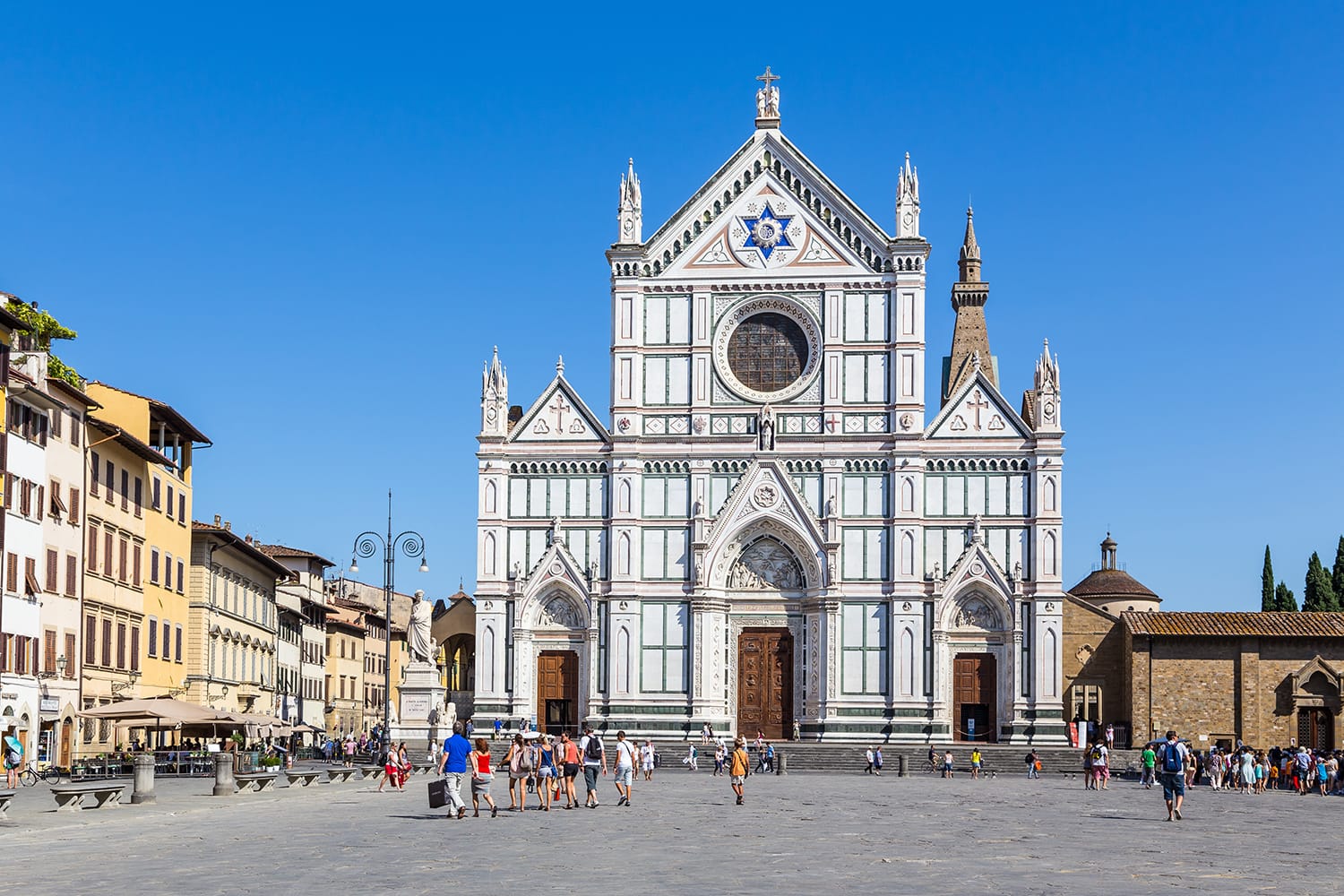
Uffizi Gallery
After a brief stroll back along the Arno, you’ll come to one of Florence’s most popular attractions, the Uffizi Gallery. Even compared to the Galleria dell’Accademia, this historic gallery boasts a huge vault of acclaimed Western art. Its collection of Renaissance artworks and even earlier pieces is virtually unparalleled.
This gallery features Italian masters such as Leonardo da Vinci, Giotto, Raphael, Michelangelo, and Caravaggio. You’ll also see works by other European artists from this period and ancient busts from the private collection of the Medici family. To see the full museum could take up your entire morning, but it would be a morning well spent.
Again, we recommend you buy skip-the-line tickets early for the Uffizi, especially if you go in the summer. For more information, see our guide on how to buy tickets to the Uffizi Gallery.
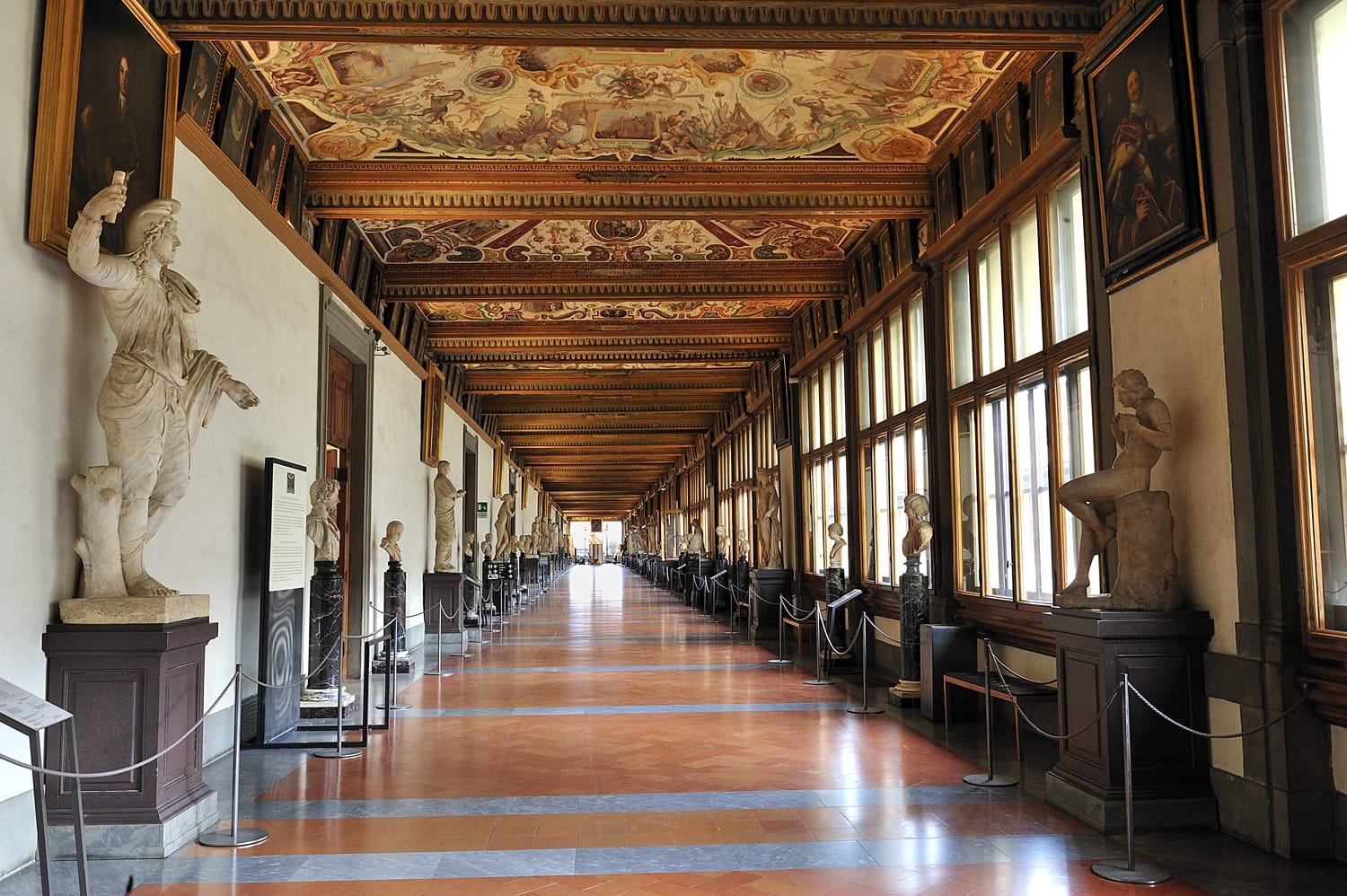
Ponte Vecchio
Although you’ve seen the Arno, you’ve yet to visit the Ponte Vecchio, Florence’s most famous bridge. What makes this 14th-century bridge so special is that it still has shops along it, as bridges did in medieval times. It also has the sad honor of being Florence’s only bridge that survived World War II.
The shops along the bridge now host various jewelers and souvenir vendors. Another remarkable feature of the bridge is the Vasari Corridor, an elevated passageway commissioned by the Medici family so they could cross without rubbing shoulders with commoners. Some of it is open to the public, allowing you to see yet another side of Florence.
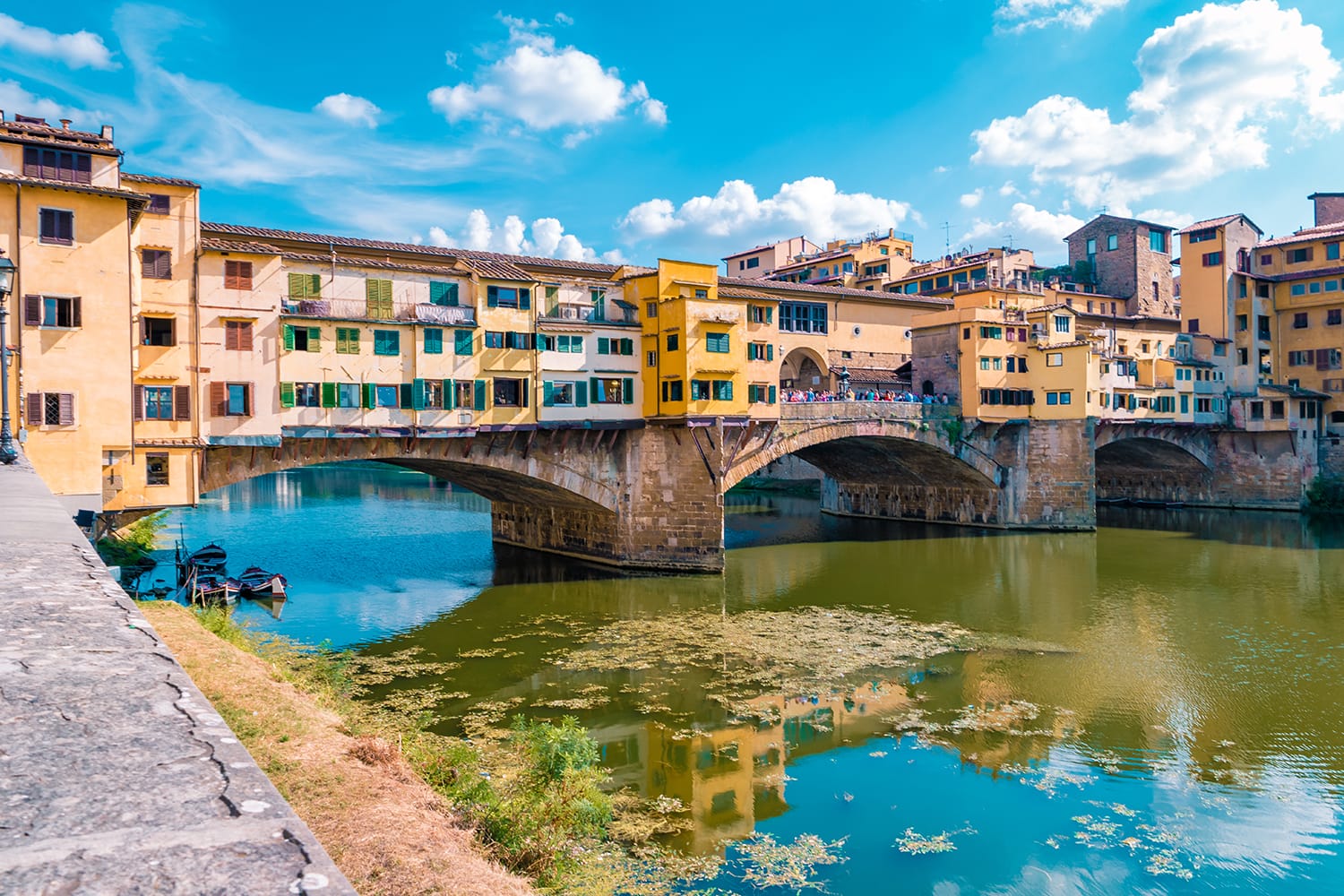
Palazzo Pitti
Having crossed the Arno, you’re now in the neighborhoods on the river’s south side. A short walk from the Ponte Vecchio takes you to the immense Palazzo Pitti, once home to the Medici family and later Italian royalty.
From the outside, the palace may not seem as enticing as other Florence attractions, but it has plenty to offer. You have your pick of museums inside, including the Imperial and Royal Apartments, the Treasury of the Grand Dukes, and the Gallery of Modern Art.
The only thing not included in the palace museum ticket is the Boboli Gardens, an elegant park full of fountains and sculptures to be adored. After so much time in the city, it could be nice to escape to somewhere greener like this. If you plan to visit the Uffizi Gallery, Palazzo Pitti, and the Boboli Gardens, you can save some money by buying the combined ticket.
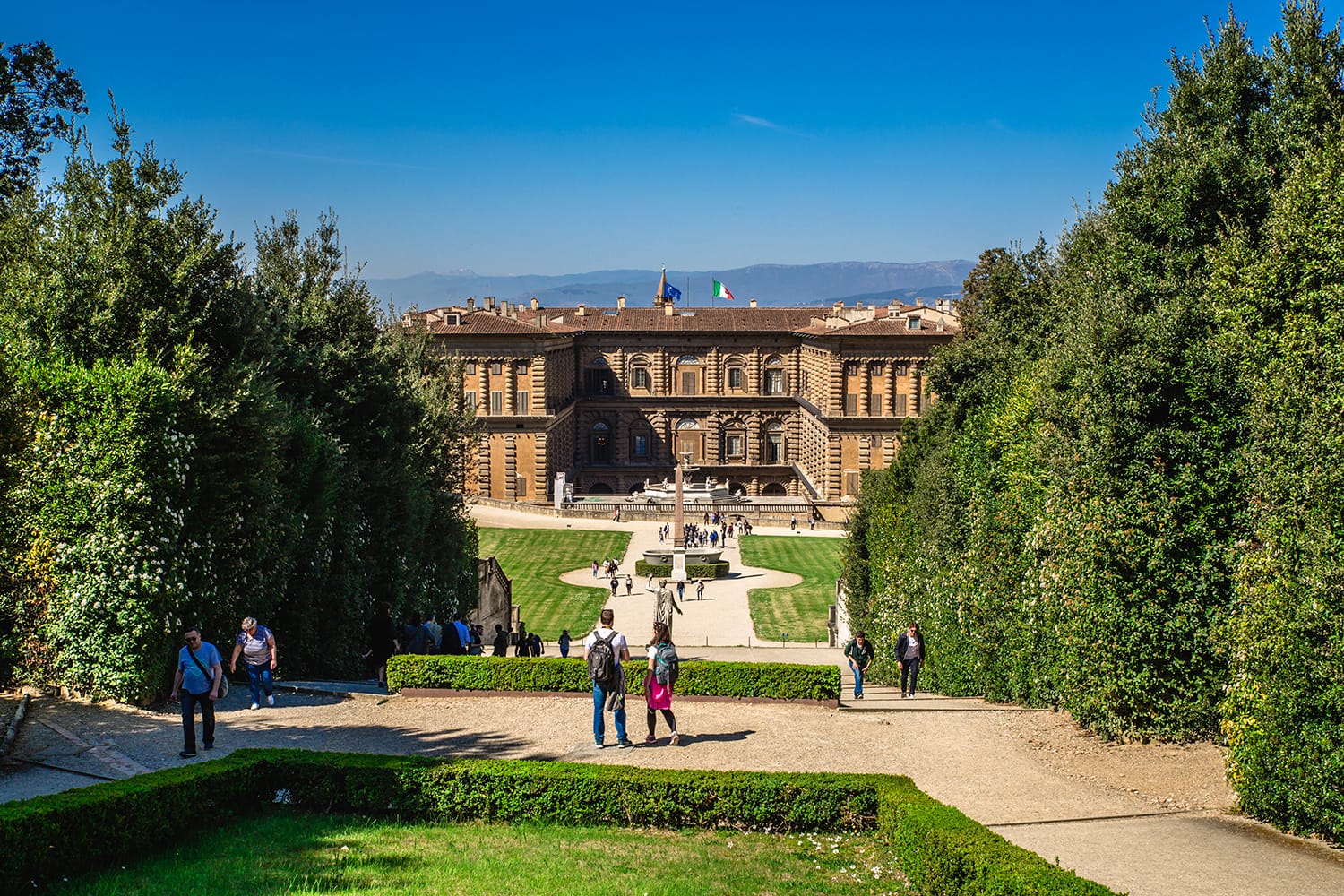
Piazzale Michelangelo
What better way to end your second day in Florence than with the best view of the city? At first sight, Piazzale Michelangelo might look like little more than a car park with a statue, but if you head to the terrace, you’ll be welcomed with one hell of a view.
The terrace looks out over the entire city, from the Arno and Ponte Vecchio to the historic center and the hills beyond. It’s from up here that you can see just how massive the Florence Cathedral is in comparison to the historic houses around it. This viewpoint puts the entire city in perspective, reaffirming just how beautiful Florence is.
It’s no surprise that Piazzale Michelangelo is usually busy, especially just before sunset. But this is one sunset spot you’ll be happy to share.
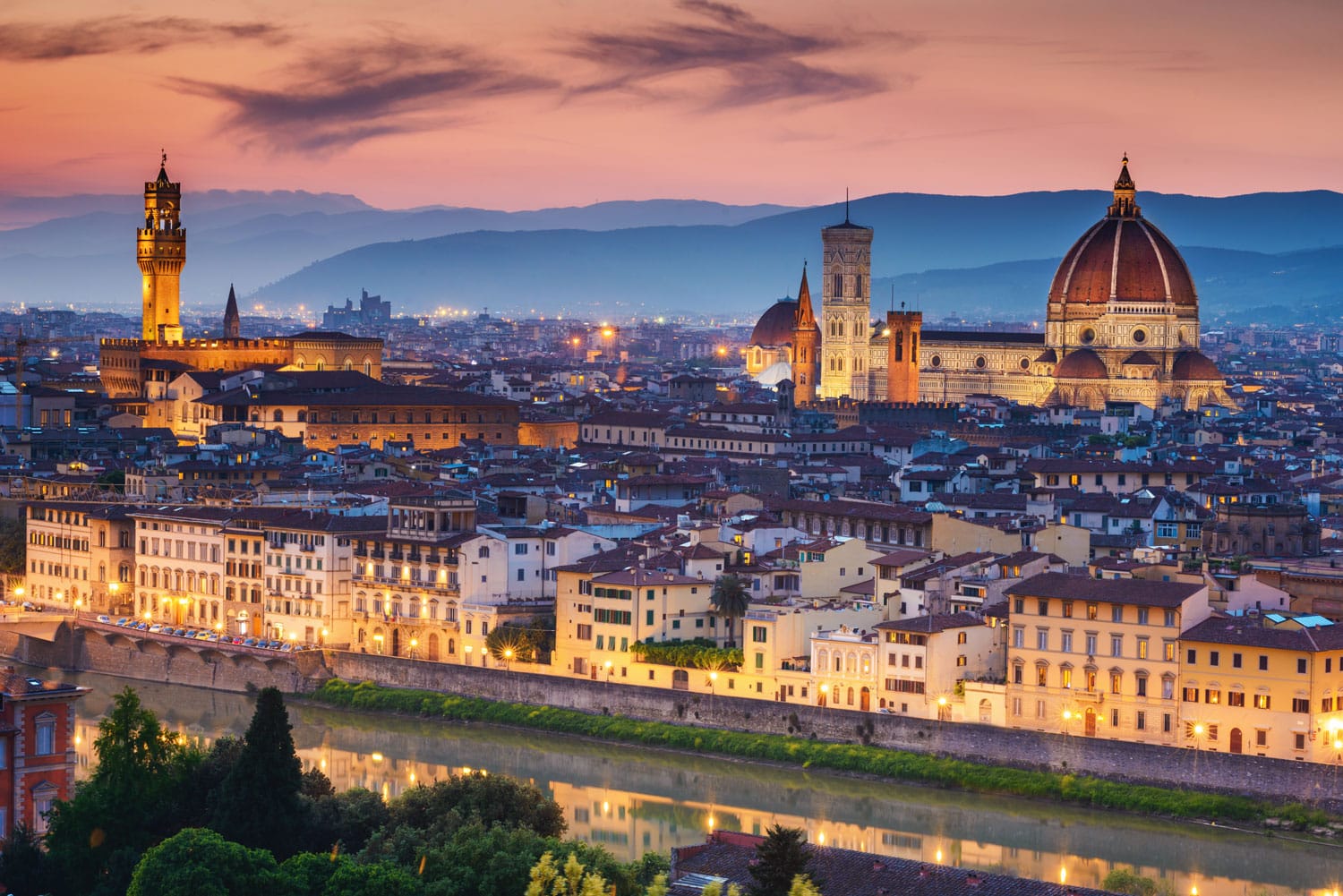
Florence Itinerary: Day 3
It’s almost unfair how great a tourist destination Florence is. Not only do you have so much to see and experience in the city itself, but Florence also makes an ideal base for day trips out into Tuscany and other nearby regions of Italy. With more than two days in Florence, you have time for one day out exploring some magical places. Here are a few ideas.
1. Pisa
Rivaling Florence as a household name, Pisa is one of the easiest day trips. This small city sits downriver from Florence, close to the Tuscan coast.
You’re bound to be familiar with at least one attraction here. The Leaning Tower of Pisa may be the city’s biggest tourist trap, but it’s well worth visiting for its location alone. Once you’ve seen the tower and taken that photo, you can enjoy many other sights nearby.
The Leaning Tower is right next to Pisa Cathedral, a magnificent marble structure that you can see inside with a free (scheduled) pass. By the cathedral is also the Pisa Baptistery, an ornate dome-shaped building that may even outshine the other two.
Over in the city center, you’ll find fantastic sights like Piazza dei Cavalieri, surrounded by Renaissance palaces. After strolling the banks of the Arno, noticing how much different it is from Florence’s riverfront, head for the pretty gardens at the Cittadella Nuova (also known as Scotto’s Garden).
Book a day tour to Pisa from Florence here!
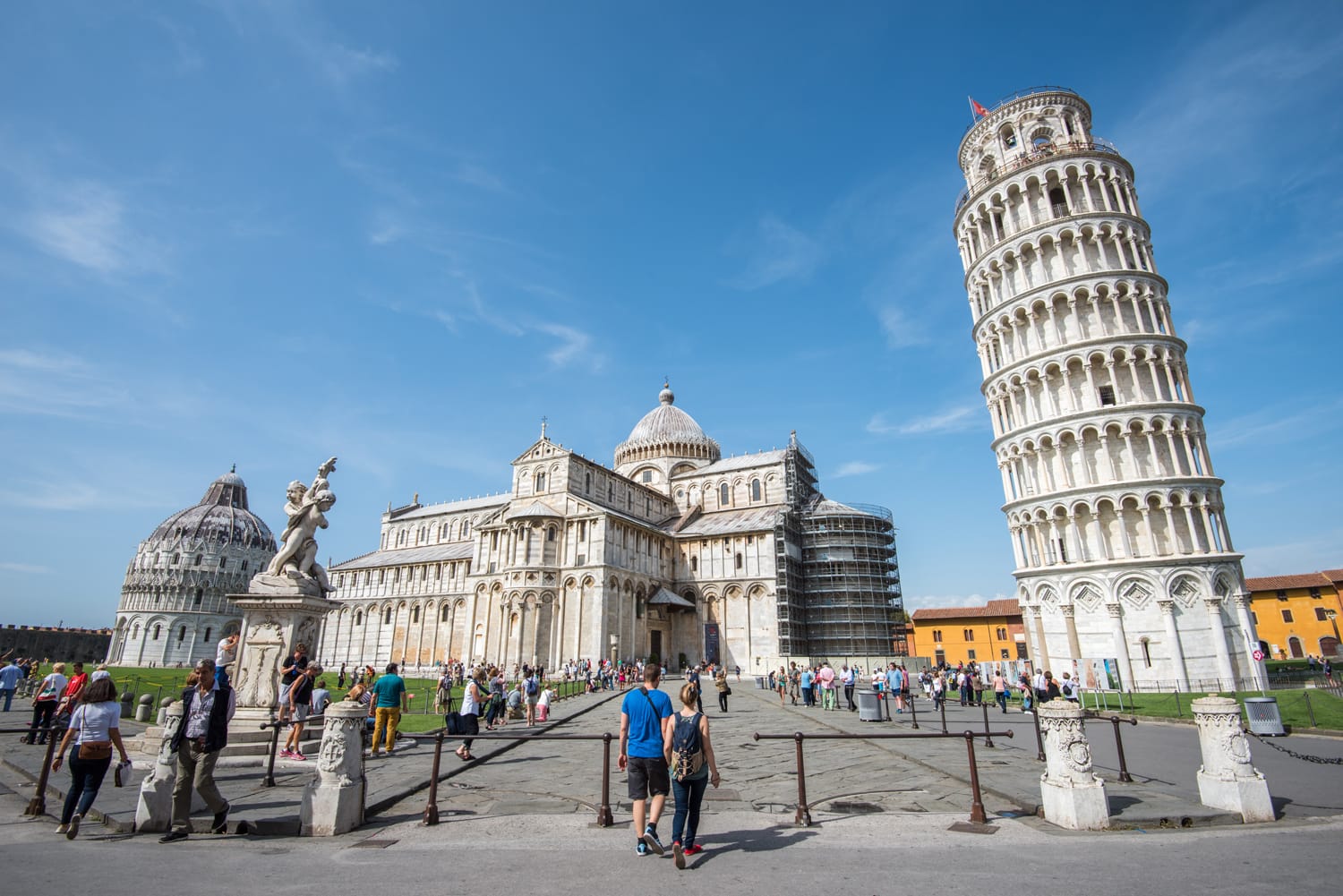
2. Siena
When it comes to magnificent cities in Tuscany, one can never overlook the beautiful hilltop Siena. The city’s historic center is packed with medieval charm, so it’s little wonder that UNESCO added it to the World Heritage Site registry.
A visit to Siena has to start with Piazza del Campo, the sloped oval plaza at the center of the city’s historic quarter. Home to the splendid Palazzo Pubblico and awkwardly tall Torre del Mangia, it also transforms into a racetrack for the famous Palio di Siena horse race.
Weaving through brick buildings and along undulating streets, you’ll find other major landmarks, such as Palazzo Salimbeni and the Medici Fortress. But nothing quite compares to the sight of the striped Siena Cathedral, which single-handedly defines the cityscape. Even after visiting the churches in Florence, you’ll want to see the style and sheer scale inside for yourself. For more information on how to spend a day in Siena, check out our Siena itinerary.
Recommendation: To make the most of your time, book this amazing full-day tour of Tuscany’s villages and wine regions from Florence. You’ll travel into the heart of the beautiful Tuscan countryside, including Siena, the town of San Gimignano, and the wine territory of Chianti.
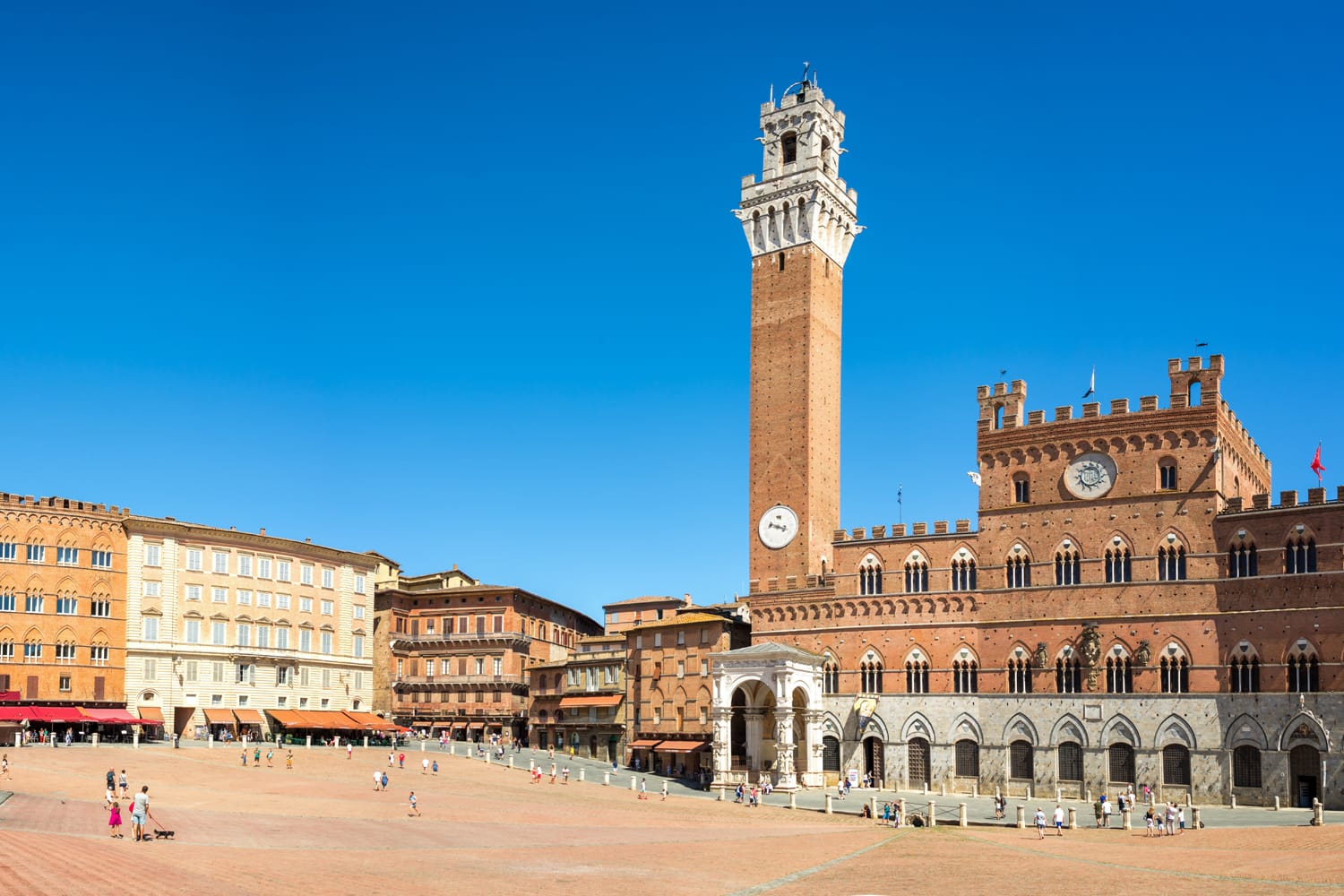
3. Cinque Terre
Just beyond the limits of Tuscany lies one of Italy’s most majestic coastlines, along which you’ll find Cinque Terre. You’ve probably seen and been enchanted by photos of this iconic Italian destination, made up of five unbelievably scenic villages that dot the Ligurian coast.
Although it could be hard to see all five towns in one day when coming from Florence, it’s certainly possible and well worth it. Road access to the villages in Cinque Terre National Park is limited, and parking spaces are few. The two typical ways people visit the villages are by hiking the coastal trails or taking the train.
The five villages are Riomaggiore, Manarola, Corniglia, Vernazza, and Monterosso. The usual practice is to go south to north or vice versa. While there are similarities between the villages, such as the look of their houses, each is surprisingly different. For instance, you’ll find lots of vineyards in Vernazza, while Monterosso has two nice beaches to enjoy. The main thing they all have in common is being so darn photogenic. Needless to say, you’ll want to bring your camera.
If you have more time in Italy and love the outdoors, we highly recommend staying here longer than a day. After all, Cinque Terre is one of the most beautiful hiking destination in the world.
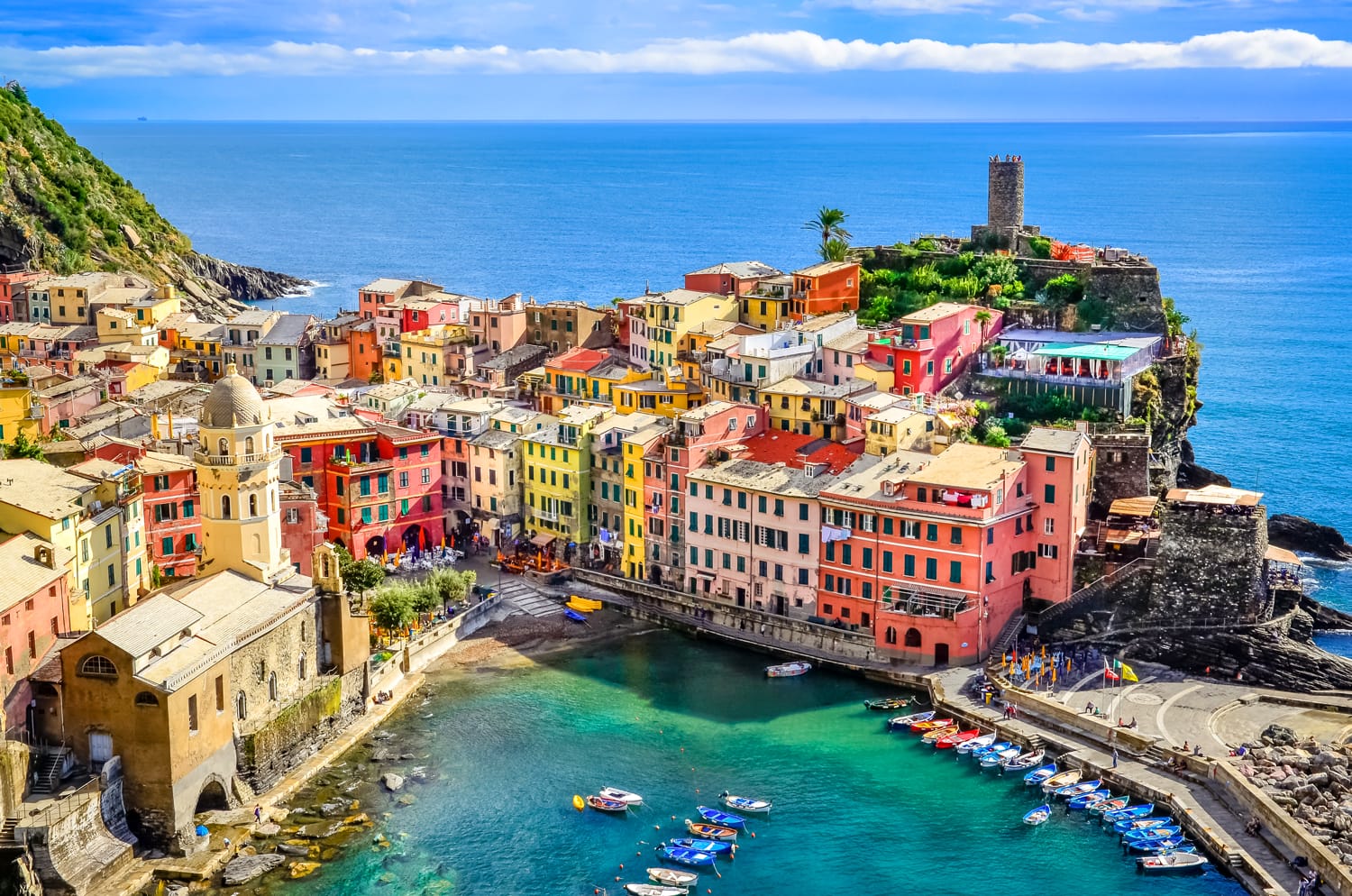
4. Bologna
Italy has quite a few fantastic Renaissance cities besides Florence, and one of the best has to be Bologna. This medieval city in the Emilia-Romagna region could easily take up several days of an Italy trip, but a day will do if you’re pressed for time.
Although it bears a few similarities to Florence, Bologna is very much its own city. For one thing, the University of Bologna is the longest-operating university in the world and gives the city a youthful vibe despite its long history. The city’s historic center is also incredibly unique, with covered porticos lining many of its streets.
Bologna offers plenty of sights along with its ambience. First of all, there’s the exquisite main square of Piazza Maggiore with the evocative Fountain of Neptune at its center. Around the sides are several grand brick palaces, such as Palazzo Re Enzo, that each deserve your time.
Other impressive sights include the Two Towers – the twin brick symbols of the city – and plenty of churches. A somewhat unusual building is the Archiginnasio of Bologna, where you’ll find the library and anatomical theater of the historic university.
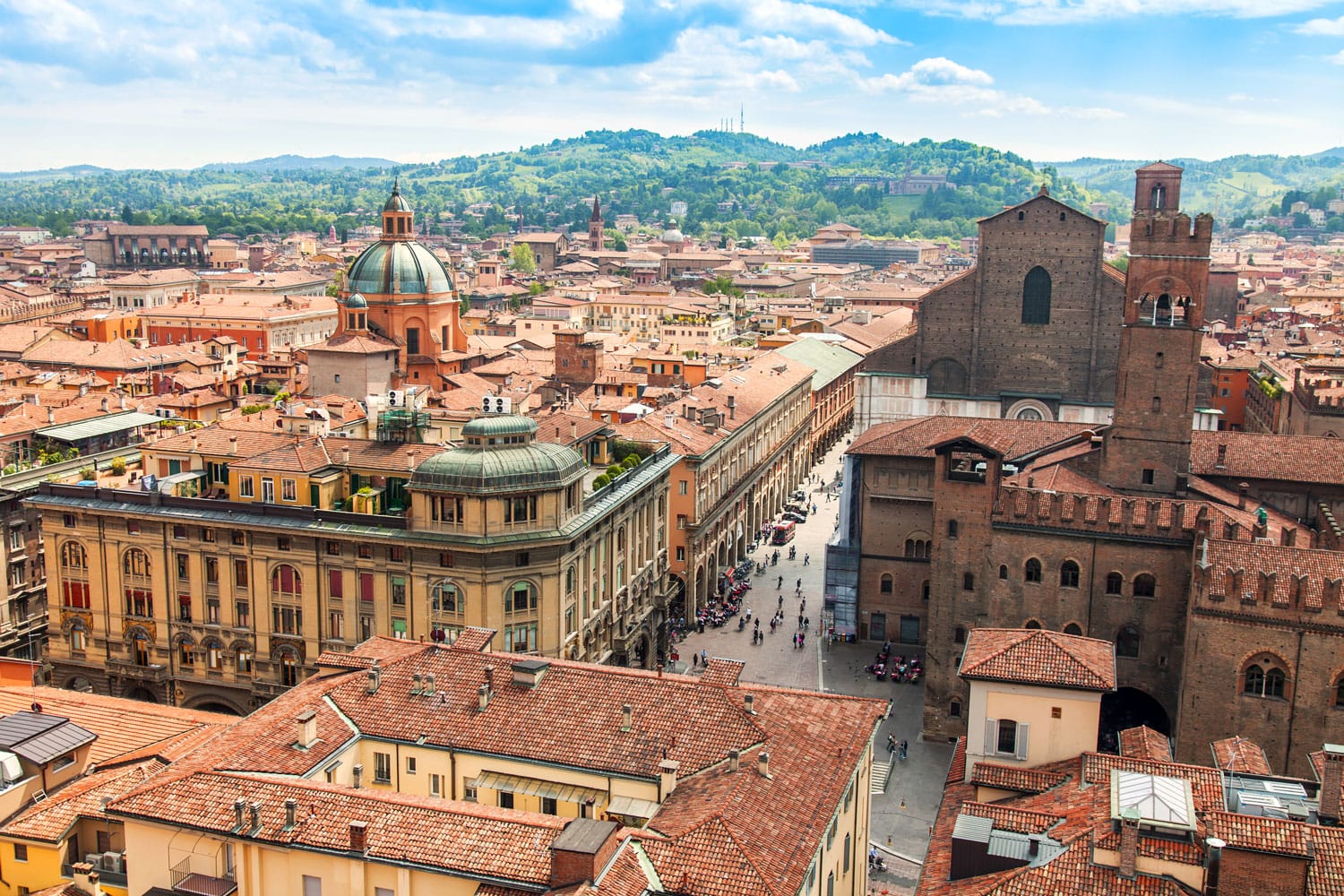
Well, now you know how to see Florence in three days! With so much to see and do, the time is sure to fly by during your visit. You’ll definitely be able to say you’ve seen Florence – and more – if you follow this itinerary.
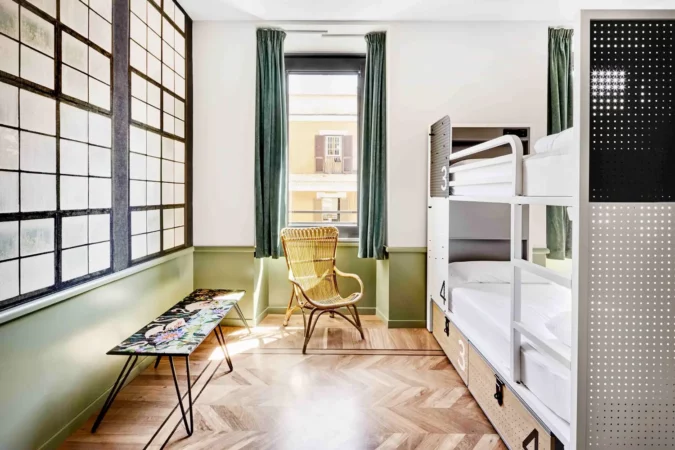
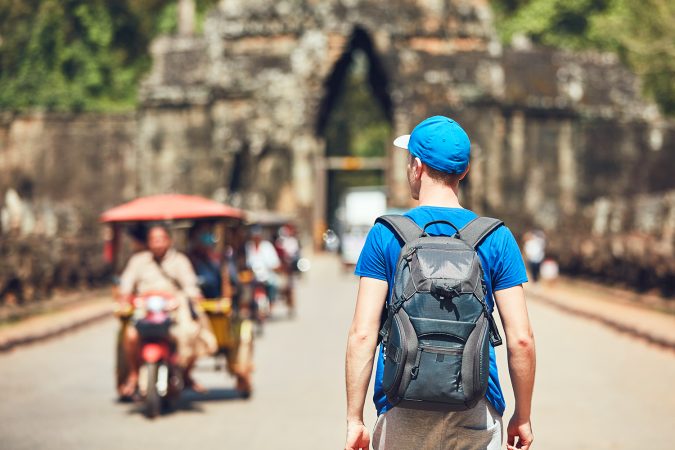
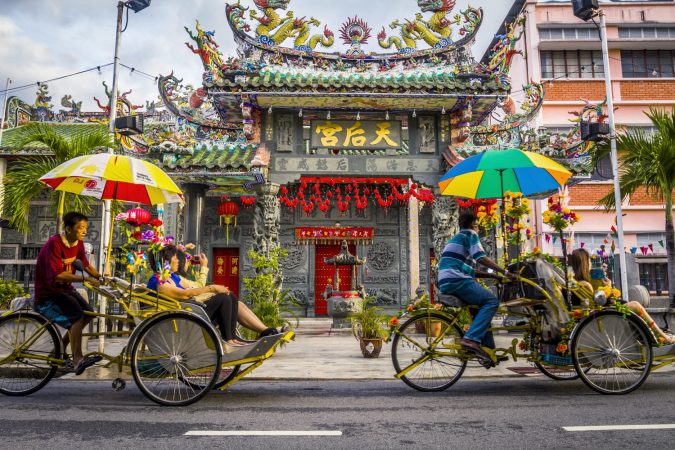
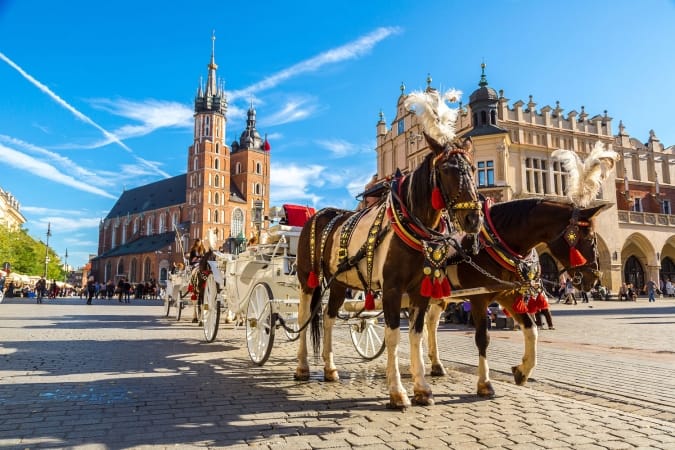
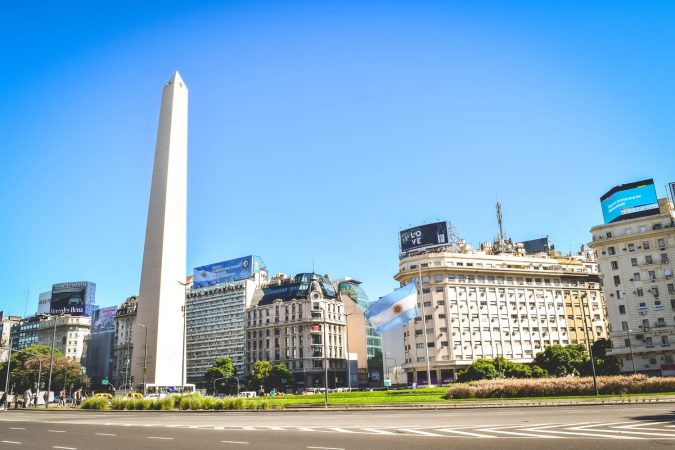
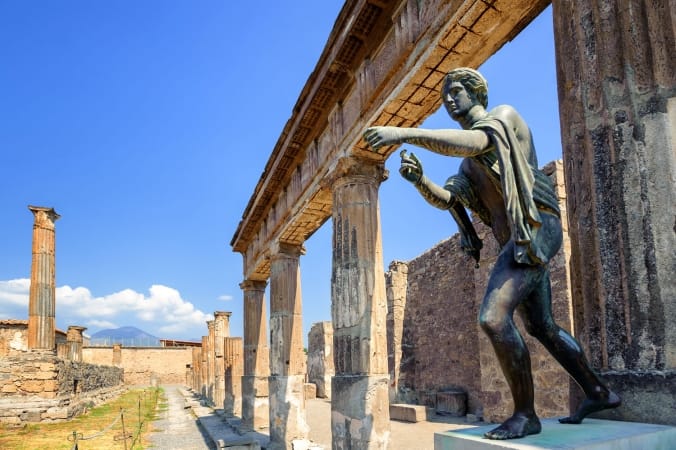
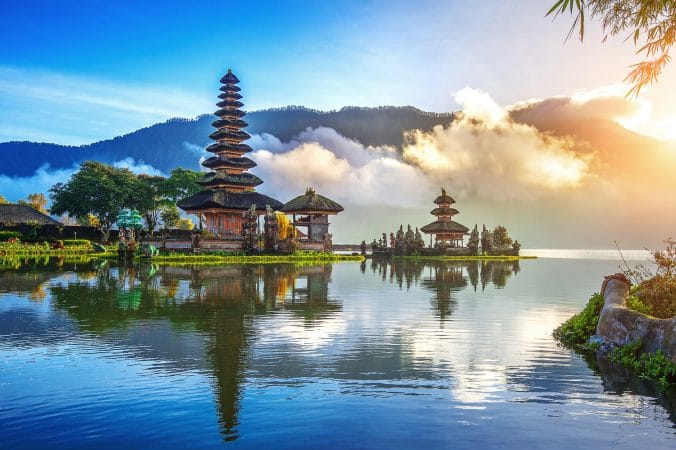
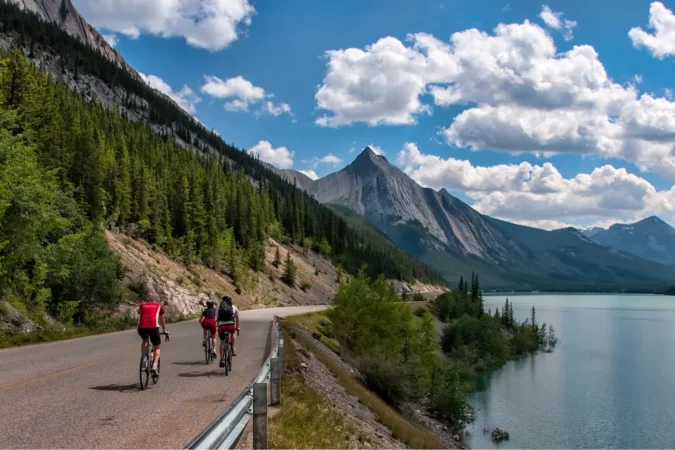
Comments